Welcome to an exciting journey into the world of Mexico’s cutting-edge greenhouse farming! As a nation blessed with abundant natural resources, Mexico has embraced innovative methods to revolutionize its agricultural landscape. Discover the revolutionary, eco-friendly approach of greenhouse farming, conquering water scarcity and extreme weather challenges.
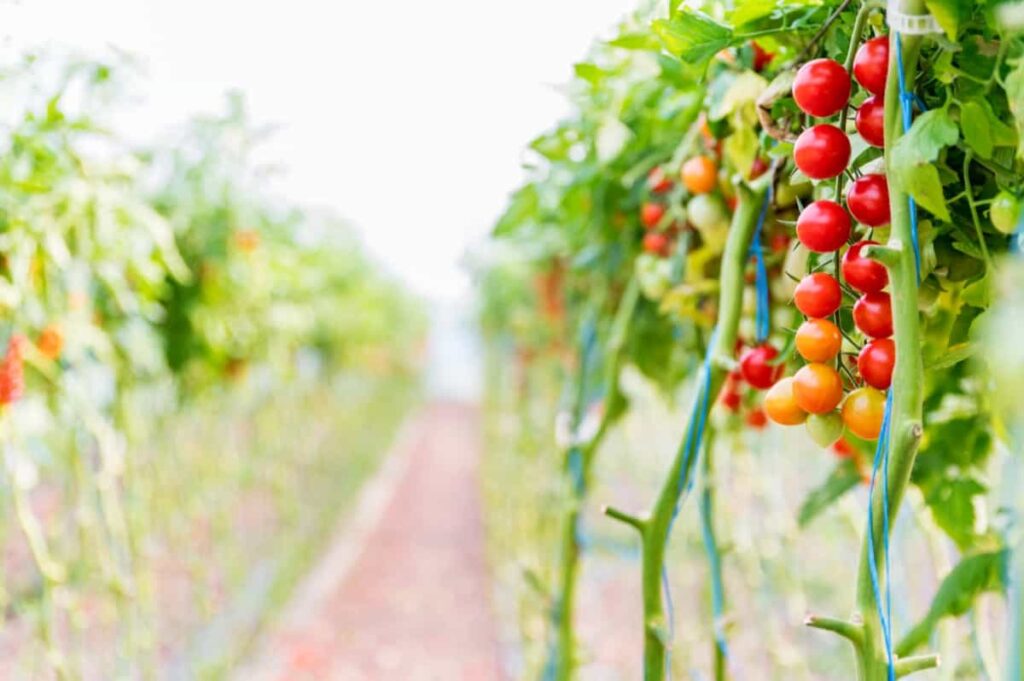
Step into a realm of controlled environments, optimizing crop growth, amplifying yields, and minimizing environmental impact. Uncover the awe-inspiring results of advanced technologies propelling Mexico’s agricultural landscape toward a sustainable future. Agriculture and sustainability unite harmoniously in this cutting-edge blog, celebrating the nation’s ingenious strides toward greener pastures. Let’s check out more information on Mexico greenhouse farming below.
What is Mexico’s Greenhouse Farming?
Enclosed structures of glass or plastic nurture crops in controlled environments, defending against harsh elements, pests, and diseases. Its meteoric rise owes to an array of benefits. Primarily, it slashes water usage by a staggering 70%, masterfully combating water scarcity. Secondly, elongated growing seasons and consistent, optimal conditions yield bountiful crops.
Embracing eco-friendliness, greenhouse farming ditches harmful pesticides. Lush tomatoes, cucumbers, bell peppers, and vibrant flowers bloom year-round, thanks to Mexico’s propitious climate and strategic location. Witness Mexico’s progressive stride toward sustainable agriculture and a verdant future.
Modern Farming Practices in Agriculture
Mexico’s climate is diverse due to its vast range, with four main climate regions: tropical, arid, temperate, and highland. Tropical regions have high temperatures and abundant rainfall, while arid and semi-arid regions have hot temperatures and limited rainfall. Temperate areas, like Mexico City and Veracruz, have pleasant, moderate climates with defined seasons. Highland areas, like the Sierra Madre Occidental and Oriental, experience cooler temperatures due to their altitude.
In case you missed it: New Mexico Vegetable Planting Calendar (NM): Month-wise Chart, Dates Guide, Schedule for Fall, Winter, Spring, Summer, and Zone-wise
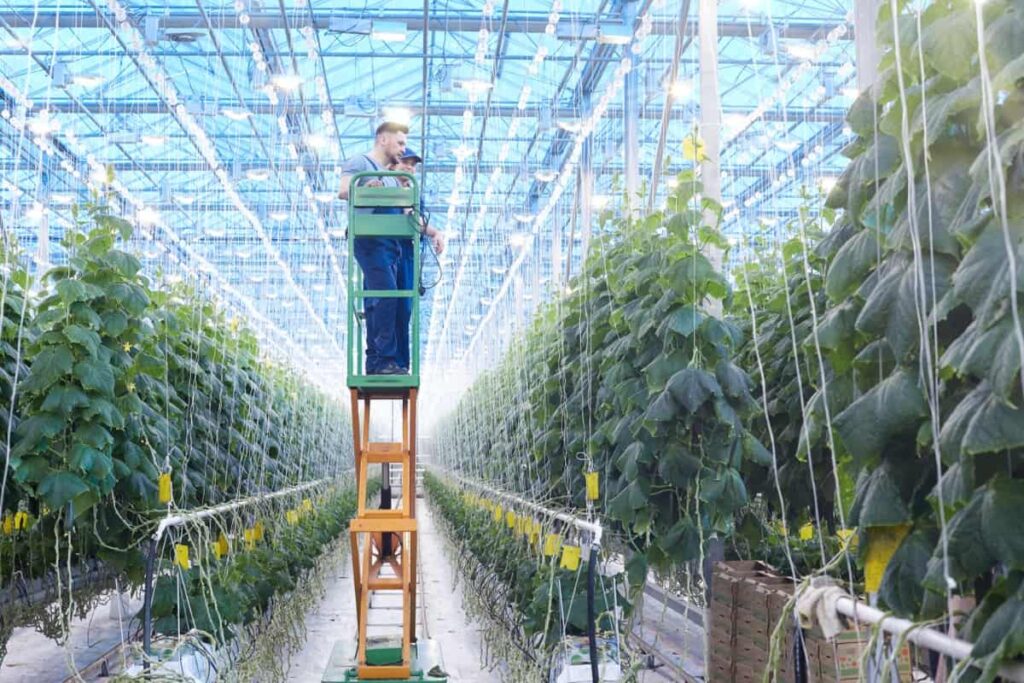
- Greenhouse Farming: Greenhouse farming is gaining popularity, especially in regions with extreme climates. It provides a controlled environment for optimal crop growth and reduced water usage.
- Precision Agriculture: This data-driven approach uses sensors, GPS, and drones to optimize farming practices, such as irrigation, fertilization, and pest control.
- Organic Farming: Mexico has seen a surge in organic farming practices, with farmers avoiding synthetic chemicals and focusing on natural methods to produce healthier and environmentally friendly crops.
- Sustainable Water Management: Given water scarcity challenges in certain regions, farmers are adopting efficient water management techniques like drip irrigation and rainwater harvesting.
Types of Greenhouses in Mexico
Mexico’s greenhouse farming has doubled vegetable production over the past three decades while combatting climate change. As a global leader in protected agriculture, Mexico utilizes greenhouses and covering materials to grow tomatoes, peppers, and other crops, countering ecosystem degradation. Over 20% of the country’s agricultural production employs these techniques, and covered agriculture has grown exponentially.
Embracing digital monitoring applications, hydroponics, and geothermal energy-powered systems, Mexico is advancing indoor agricultural practices. This sustainable approach, covering 50,000 hectares, proves vital to conserving fertile land and irrigation water while addressing environmental challenges. Moreover, greenhouse innovations serve as a blueprint for other nations to follow, helping to meet the demands of a growing global population while combatting world hunger and reducing greenhouse gas emissions caused by food waste.
- Polyethylene Greenhouses: Widely used due to their cost-effectiveness, these greenhouses feature a polyethylene film covering. They provide good light diffusion and temperature control, ideal for growing crops like tomatoes, cucumbers, and peppers.
- Glass Greenhouses: Commonly seen in regions with milder climates, glass greenhouses offer superior light transmission and durability. They are well-suited for delicate plants and ornamental flowers.
- Shade Net Houses: Utilized in hotter areas to protect crops from excessive sunlight, these structures use shade nets to regulate light levels, maintaining an optimal environment for cultivation.
Greenhouse Farming Techniques in Mexico
Hydroponics Cultivation: Mexico’s greenhouse farmers are turning to hydroponics, a soilless technique that utilizes nutrient-rich water solutions to cultivate crops. This method allows precise control over nutrient levels, resulting in faster growth rates and higher yields. Hydroponics is particularly advantageous in water-scarce regions as it reduces water consumption significantly compared to traditional soil-based farming.
Aquaponics Integration: Aquaponics is gaining momentum in Mexico’s greenhouse farms by integrating aquaculture and hydroponics. Fish waste acts as a natural fertilizer for plants, while plants purify the water for the fish. This symbiotic relationship creates a sustainable and efficient closed-loop system, promoting eco-friendly practices.
In case you missed it: Mexico Vegetable Planting Calendar: Month-wise Chart, Schedule Guide
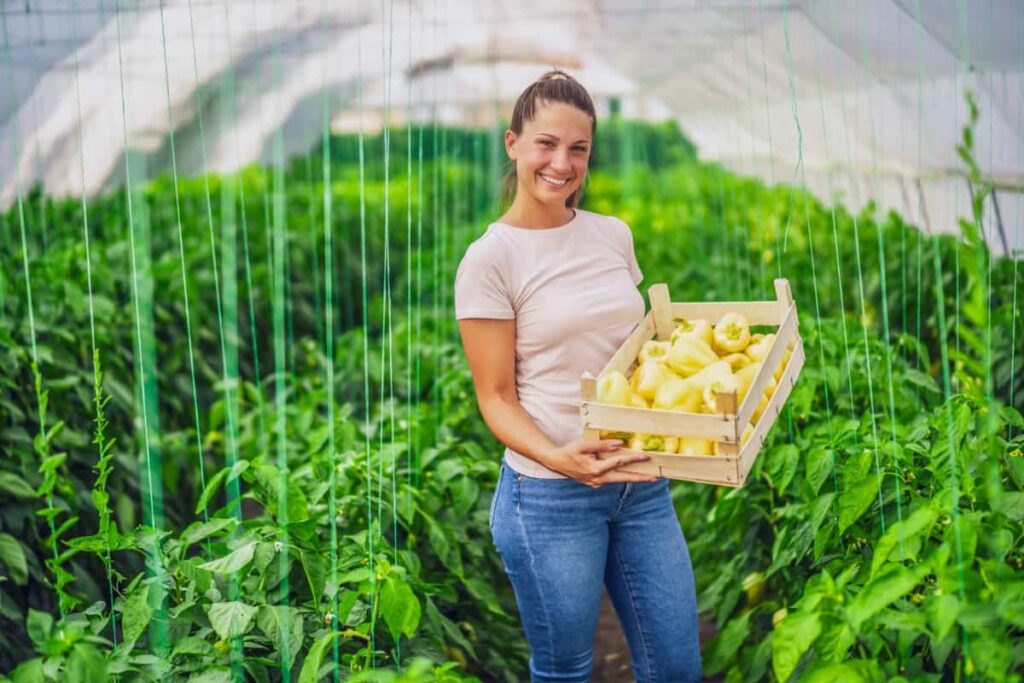
Vertical Farming: Given Mexico’s limited arable land, vertical farming has emerged as a viable solution. This technique utilizes stacked crop layers in vertical arrangements to maximize space usage without compromising productivity. Vertical farming is a boon for urban settings, offering fresh produce close to consumers and reducing transportation costs.
Climate Control Automation: Advanced climate control systems in greenhouses are precisely tailored to Mexico’s diverse climatic conditions. These automated systems adjust temperature, humidity, and ventilation, optimizing crop growth throughout the year, regardless of external weather fluctuations.
Biological Pest Control: Striving for chemical-free cultivation, Mexican greenhouse farmers employ biological pest control methods. Beneficial insects like ladybugs and predatory mites are introduced to combat harmful pests, ensuring a balanced ecosystem within the greenhouse.
Smart Irrigation Systems: Water management is crucial in Mexico’s farming landscape. Smart irrigation systems monitor soil moisture levels and deliver water precisely when and where needed, optimizing water use and minimizing wastage.
How to Start a Mexican Greenhouse Farming Business
- Research and Planning: Conduct thorough research on greenhouse farming, local market demands, and potential crops. Create a detailed business plan outlining your goals, budget, and marketing strategy.
- Legal Requirements: Register your business and obtain necessary permits and licenses from local authorities. Ensure compliance with agricultural regulations and environmental standards.
- Site Selection: Choose a suitable location with ample sunlight exposure and easy access to water sources. Consider the climate and nearby markets for efficient distribution.
- Greenhouse Design and Construction: Select the type of greenhouse that suits your needs, budget, and crops. Construct the greenhouse using eco-friendly materials and energy-efficient systems.
- Crop Selection: Decide on cultivated crops based on market demand and climatic conditions. Start with a few crops to gain experience and expand later.
- Sourcing Seeds or Seedlings: Purchase high-quality seeds or seedlings from reputable suppliers. Ensure they are suited for greenhouse cultivation.
- Climate Control and Irrigation: To regulate temperature and humidity, install climate control systems like fans and vents. Implement a smart irrigation system to optimize water usage.
- Planting and Care: Plant the crops following recommended spacing and planting guidelines. Monitor plant health and provide appropriate nutrients and pest control.
- Harvest and Post-Harvest: Harvest crops at the right time for optimal quality. Handle produce carefully during post-harvest to minimize damage and prolong shelf life.
- Market and Sell: Develop a marketing strategy to promote your greenhouse products. Establish relationships with local markets, restaurants, and grocery stores.
- Record Keeping and Analysis: Maintain detailed expenses, yields, and sales records. Analyze data regularly to improve efficiency and profitability.
In case you missed it: Sustainable Greenhouse Farming: The Future of Agriculture
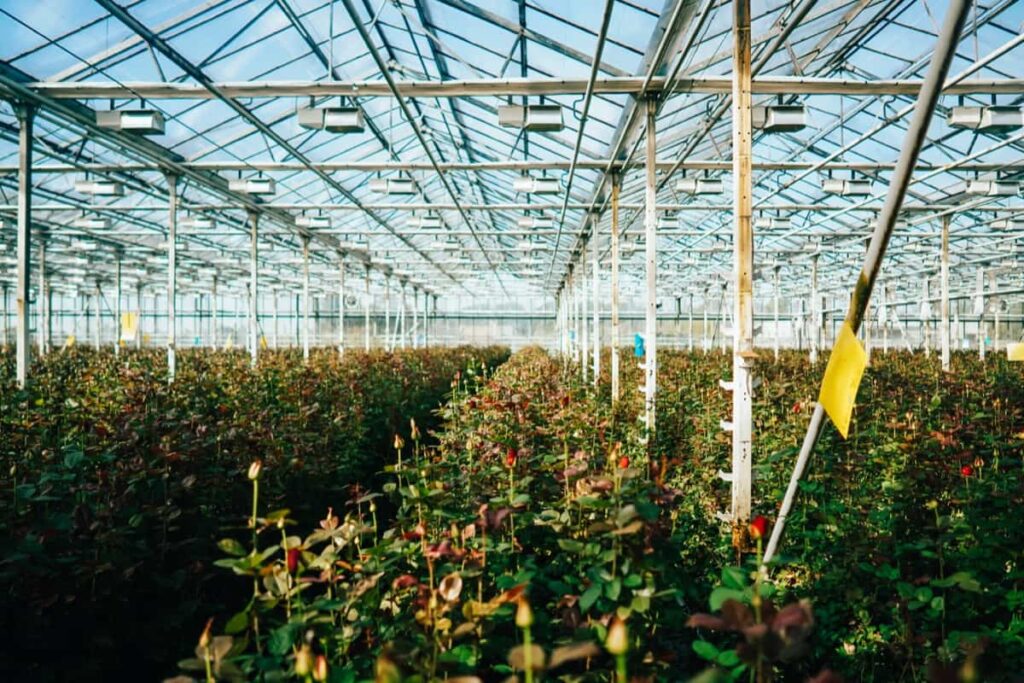
Sustainable Practices in Mexico: Greenhouse Farming
Sustainable greenhouse farming in Mexico involves site selection, eco-friendly materials, smart irrigation systems, natural pest control, renewable energy integration, climate control automation, hydroponic cultivation, harvest and post-harvest practices, recycling and reuse, monitoring and data analysis, and continuous improvement. These practices aim to minimize environmental impact, promote energy efficiency, and reduce and minimize waste.
Smart irrigation systems and water-recycling technologies are employed, with soil moisture sensors ensuring precise water delivery. Natural pest control and renewable energy integration are also implemented, with solar energy harnessed through photovoltaic panels. Hydroponic cultivation uses soilless hydroponic systems to provide nutrient-rich solutions directly to plant roots, enhancing growth rates and yields.
Harvest and post-harvest practices are followed to minimize waste, with greenhouse waste composted or used for energy generation. Continuous improvement in sustainable practices in Mexico’s greenhouse farming industry is achieved through research and innovation, aiming for greater efficiency and eco-friendliness.
Climate Control Systems for Mexican Greenhouses
Mexican greenhouses can benefit from various climate control systems to ensure optimal growth conditions. Natural ventilation, shade nets, cooling systems, heating systems, automated climate control, thermal screens, and supplemental lighting are essential for maintaining a stable climate and reducing energy consumption.
These systems help regulate temperature and humidity, protect plants from heat stress, and maintain a favorable crop environment. Additionally, thermal screens help retain heat during colder nights, reducing energy consumption and providing a stable climate. By incorporating these diverse climate control methods, Mexican greenhouses can promote continuous growth and maintain a healthy crop environment.
Crop Selection for Mexican Greenhouse Farming
- Tomatoes: One of the most popular crops, tomatoes thrive in controlled greenhouse environments, producing high-quality fruits year-round. Varieties like cherry, beefsteak, and Roma are commonly grown.
- Cucumbers: With their vining growth habit, cucumbers flourish in greenhouses, providing a consistent supply of fresh, crisp fruits prized by consumers.
- Peppers: Bell peppers and chili peppers are favored greenhouse crops in Mexico. The controlled conditions promote uniform growth and enhance the color and flavor of the peppers.
- Berries: Strawberries and raspberries can be successfully cultivated in greenhouses, allowing for multiple harvests throughout the year.
- Roses: Roses are a significant flower crop in Mexican greenhouses, meeting domestic and international demand. Greenhouse cultivation ensures year-round production and premium-quality blooms.
- Carnations: Known for their vibrant colors and longevity, carnations thrive in greenhouse settings, making them an ideal choice for cut flower production.
- Chrysanthemums: Chrysanthemums are popular greenhouse flowers, adored for their diverse shapes and hues, and are widely used in floral arrangements.
- Lettuce: Different lettuce varieties, including romaine, butterhead, and leaf lettuce, are cultivated in greenhouses due to their fast growth and high demand.
- Herbs: Culinary herbs like basil, mint, cilantro, and parsley flourish in controlled environments, providing fresh and aromatic harvests year-round.
- Microgreens: These young, nutrient-dense greens are gaining popularity, and greenhouses offer an ideal environment for rapid growth.
- Zucchini and Eggplants: These warm-season vegetables are well-suited for greenhouse cultivation, ensuring a steady supply even during colder months.
In case you missed it: How Do You Grow Cucumbers in a Greenhouse: A Step-by-Step Guide for Beginners
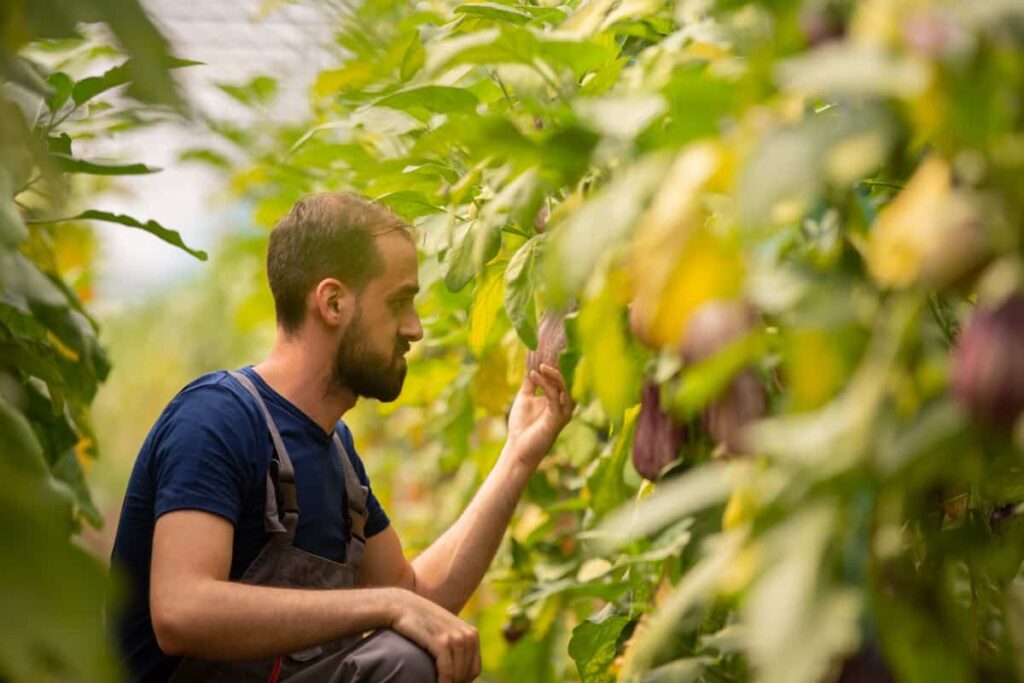
Pest and Disease Management in Mexican Greenhouse Farms
Mexican greenhouse farms face various pests and diseases that can impact crop health and productivity. Common pests include aphids, whiteflies, thrips, powdery mildew, botrytis (Gray Mold), and fusarium wilt. Regular monitoring and introducing natural predators like ladybugs can help control aphid populations, whiteflies, and thrips. Common diseases include powdery mildew, which forms a white powdery coating on leaves, and botrytis, which attacks flowers and fruits.
To manage these diseases, proper air circulation and fungicidal treatments are crucial. Mexican greenhouse farmers adopt Integrated Pest Management (IPM) to minimize chemical pesticide use and protect beneficial insects. Sanitation and quarantine measures and cultural practices like proper plant spacing, adequate ventilation, and a clean greenhouse environment are essential for preventing pest and disease development. Regular monitoring and record-keeping help identify patterns and implement timely management strategies.
Greenhouse Automation Technologies in Mexico
Greenhouse automation technologies are revolutionizing the Mexican greenhouse farming industry, leading to stronger plants, higher production, and reduced costs. Growers in Mesa Grande, Sevaga, and Bresca/Hortalizas have embraced autonomous growing using Crop Controller by Blue Radix.
This technology continuously adjusts greenhouse climate and setpoints without human intervention, optimizing resource usage and saving energy. The system allows growers to determine their crop strategies, leading to improved plant physiology and better crop development. The results include increased crop productivity, stronger plants, and reduced incidences of diseases.
By introducing artificial intelligence and greenhouse automation, Mexican growers can better control daily operations, enhance predictability, and transition smoothly between climatic seasons. As more farmers adopt these cutting-edge technologies, the Mexican greenhouse industry is experiencing a paradigm shift towards sustainable and efficient crop management.
Energy-efficient Practices: Mexico Greenhouse Farming
In Mexico’s greenhouse farming, energy-efficient practices are pivotal in sustainability. Growers implement advanced technologies like LED lighting, which consumes less electricity and extends crop photoperiod. Moreover, energy-saving climate control systems, such as thermal screens and automated ventilation, help optimize temperature and humidity levels.
Integrating solar panels for renewable energy further reduces the greenhouse’s carbon footprint. By adopting these energy-efficient practices, Mexican greenhouse farmers enhance productivity and contribute to environmental conservation, ensuring a greener and more sustainable future for the agricultural sector.
Government Regulations for Greenhouse Farming in Mexico
Greenhouse farms must adhere to strict environmental standards, including proper waste management and water conservation, to minimize their impact on ecosystems. Government authorities enforce regulations to monitor pesticide use and ensure crop safety. Land use and zoning regulations dictate suitable locations, while labor laws protect workers’ rights and welfare.
Sanitary standards ensure the quality of agricultural produce and prevent disease spread. Import and export regulations ensure compliance with international trade agreements and safeguard local markets. The Mexican government may offer subsidies and incentives to promote sustainable greenhouse farming practices, technological adoption, and investment in rural areas.
In case you missed it: How to Start Microgreens Vertical Farming: For Indoors, Greenhouse, Growing Tips, Cost, and Benefits
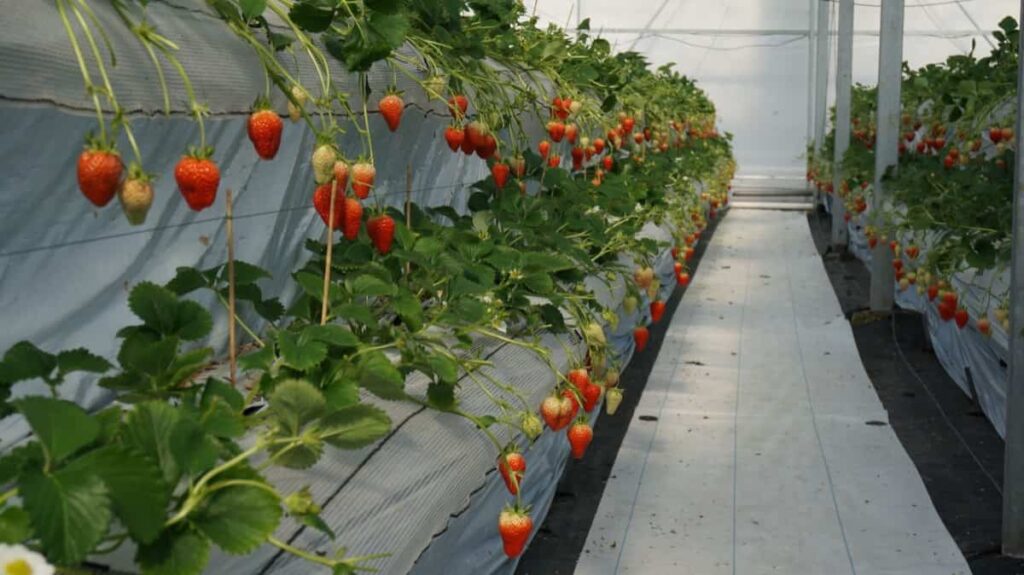
Market Trends and Opportunities in Mexican Greenhouse Farming
The increasing demand for fresh, locally-grown produce presents a favorable environment for greenhouse growers. Consumers prefer sustainably grown crops, driving the adoption of eco-friendly practices in the industry. Moreover, technological advancements in automation and climate control systems enhance productivity and efficiency. Export opportunities to international markets are expanding, especially for high-value crops like tomatoes and berries. The rising awareness of food safety and traceability further boosts the market for greenhouse products.
Conclusion
Mexico’s greenhouse farming is a thriving and sustainable sector, embracing advanced technologies, eco-friendly practices, and meeting market demands. It holds immense potential for continued growth and success in the future.
- Management Pests and Diseases in Your Cotton Field
- Sheep Farming Business Plan for Beginners
- Aquaponic Farming at Home: A Step-By-Step Guide
- Profitable Village Farming Business Ideas in 2024
- High-Yield Aquaculture: Fast-Growing Fish for Farming
- Effective Fish Pond Construction Techniques for Beginners
- Irrigation and Water Management in Pineapple Farming
- Blossom to Harvest: Mastering Flowering and Pollination in Papaya Farming
- Pig Fattening Essentials: From Selection to Sale for Beginners
- Raising Wagyu Cattle: A Complete Guide for Premium Beef Production
- Soil Types and Their Water Holding Capacity
- Optimizing Irrigation Schedules for Coconut Groves for Enhanced Yield
- Espresso Your Garden: Coffee Grounds for Healthier Acid-Loving Plants
- The Best Soil Mix for Snake Plants: How to Mix Your Own Snake Plant Soil
- Green Thumb Success: Expert Tips for Cultivating Greenhouse Beans All Year Round
- Bloom All Year Round: The Ultimate Guide to Indoor Hyacinth Care
- Eco-Friendly Gardening: How to Make Liquid Fertilizer from Kitchen Waste
- Ultimate Guide to Grow Anise in Pots: Explore Seed Propagation to Harvesting
- Guide to Raising Chester White Pigs: Discover Breed Facts to Growth Management
- Mastering the Elegance: The Ultimate Guide to Weeping Cherry Tree Care, Planting, and Maintenance
- Ultimate Guide to Planting Garlic in Grow Bags: Growing Strategies for Beginners
- How to Fix Spider Plant Leaf-Related Problems: Natural and Organic Remedies
- 10 Reasons Why Your Tulsi Plant is Shedding Leaves: Home Remedies and Solutions
- Optimizing Growth and Yield: The Advantages of Palm Bunch Ash Fertilizer
- Utilizing Neem Oil Extract as a Natural Pesticide for Hydrangea
- From Soil to Harvest: Various Ways in Which Farmers Can Use AI Tools
- Steps to Encourage and Induce Citrus Flowers: A Comprehensive Guide
- How to Fix Snake Plant Leaf-Related Issues: Natural and Organic Remedies
- Transform Your Garden into a Fragrant Oasis with Raat Ki Rani (Night Blooming Jasmine)
- Discover the Ideal Chicken Breeds for Philippine Farms
- How to Create a Poultry Egg Farm Business Plan for Profits
- Grow Lemon Cucumbers Like a Pro: Insider Techniques for Bountiful Yields
- Ultimate Guide to Caring for Your Pink Princess Philodendron: Tips for Thriving Variegation
- Areca Nut Profit Per Acre: Calculating Yield and Cost of Cultivation
- How Kaveri Chicken is Becoming a More Profitable Breed in Indian Backyards
- Transform Your Barn: 9 Steps to Convert a Horse Stall into a Chicken Coop
